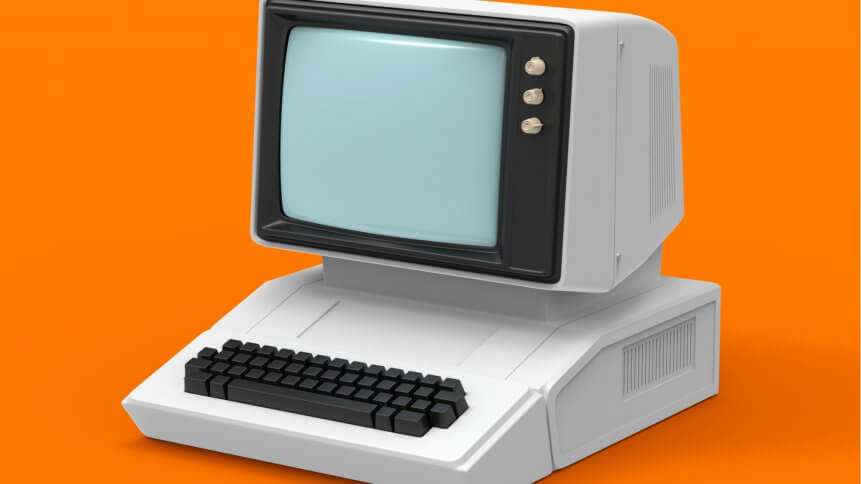5 signs your business might need a software upgrade

- The demands of remote work is highlighting where legacy technology is no longer hitting the mark
- Here are five signs that could indicate it’s high-time to consider an upgrade
Over the past few months, businesses across all sectors have learned where their technology and software programs fall short.
While many companies had already taken proactive steps to upgrade their digital solutions, the rapid move to remote work forced others to reckon with inefficient systems that have gone years without updates.
The transition to remote work highlighted the inefficiencies and an over-reliance on legacy technology that’s dominated the landscape for years. Outdated machinery, old software and inefficient processes can cost businesses up to US$1.8 billion each year in wasted productivity.
Yet many companies continue to hold out on necessary upgrades to existing tech. The reluctance to move to new tools is often rooted in the employee’s comfort with current technology, fear over adjusting to new tools, and a lack of time and resources to commit to change.
But to remain competitive in today’s market, delayed technology upgrades put the long-term health and success of your business at risk.
Finding the right time to evaluate and implement new software solutions can be a challenge when your current system seems “good enough,” especially when your team is already busy managing remote technology support. But reliable software is a necessity that keeps your business competitive. So, how can you tell when it’s time for an upgrade?
5 signs your software needs an upgrade
The software you use every day impacts your business in a variety of ways, from identifying potential projects to tracking financials. Allowing just one of these tools to go stale puts the health of your firm at risk. Most business processes rely on software — so it’s critical to ensure the software your organization uses is secure, up-to-date, reliable and capable of supporting business growth.
If you’re unsure whether your organization’s software needs an upgrade, watch for the following warning signs that your software is creating a liability:
# 1 | You’re losing revenue because billable staff’s time is wasted
When staff members spend too many hours troubleshooting tech or performing tedious manual processes, those hours are lost to potential revenue generating work. By using more sophisticated tools that automate manual processes, you can reduce bottlenecks and improve staff productivity.
# 2 | Missing out on new opportunities
If your business has stagnated, poor processes or badly run software could be to blame. As the rate of change in the industry accelerates and your company scales, legacy technology is unable to keep up with the changing needs of your firm and the needs of your clients. You may lose out on big projects and opportunities.
# 3 | Company data is housed in multiple locations
When information is housed in multiple data sources or locations, it’s more difficult to manage and control, leading to added risk and increased potential for exposed data. Personal or company information may be leaked or held for ransom when dated software solutions allow breaches to slip through the cracks unnoticed.
YOU MIGHT LIKE

IBM feels burn from COVID-19 software spend slow-down
# 4 | You’re using manual workarounds…
…to accommodate your company’s legacy technology. As your business changes and scales, workers may be required to take on tasks that have grown more complex over time.
Multiple bolted-together solutions and processes are prone to human error, often leading to problems. If you find yourself lacking trust in the accuracy of your data, you may need to consider tools that standardize and eliminate manual tasks from employees.
# 5 | Team members complain about your software…
…and administrative burden. If the frontline employees tasked with using your technology daily increasingly complain, it’s a good sign your company’s software needs an update — and an even better sign that your team is ready to buy into and learn a new solution. Employees can become disengaged or disgruntled with non-modern tools and seek out opportunities to work with better tools that will enhance their skills and career paths.
Although many businesses are working to improve their bottom lines and adapt to current health and safety pressures, software isn’t on their radar. COVID-19 has upended many processes in the workplace and returning to systems that were in place before the pandemic is unreasonable; now is actually a great time to upgrade software as everyone learns and adjusts to new routines together.
Of course, the idea of change can be intimidating — adjusting to a new software requires a time commitment for sufficient upskilling and onboarding. But effective change management of sophisticated software solutions ensures the future success of your business and allows you to optimize your services, making it an investment well worth the time and effort.
This article was contributed by Brian LaMee, VP Product Marketing at Deltek









